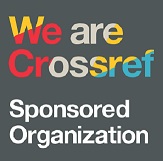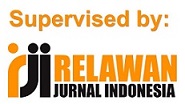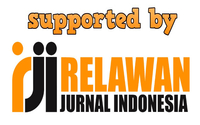IS TRANSLANGUAGING LEGITIMATE IN ENGLISH LEARNING?: STUDENTS’ PERSPECTIVES FROM INDONESIA
Abstract
Translanguaging pedagogy is the balance of using two languages in language learning. As in Indonesian context, the practice of integrating Indonesian language (L1) into English classes (L2) or translanguaging practice is very common to happen. Many students think it is useful for them in learning a foreign language. The students perceived the translingual practice is helpful. However, the teachers still think it is an illegitimate practice. Therefore, this research aims to support the idea of using Indonesian language in English language learning and explore its practice for students scaffolding. The method used was a descriptive qualitative using observations, questionnaires, and interviews. The data source for this research was 40 high school students taught by one English teacher, selected purposefully. The findings of this study show that teachers and students engage in translanguaging activities. The teachers and students use Indonesian language for more than half of the entire teaching and learning process. Although, the teacher still felt that the use of Indonesian language is inevitable due to the students' low abilities. Yet, from the student side, this practice received a positive response. Students found it beneficial for understanding English lessons.
Keywords
Full Text:
PDFReferences
Asra, S., Saputra, N., Isda, I. D., Fadlia, F., & Diani, W. R. (2023). L1 in L2: Indonesian towards English in Public Speaking Class. English Teaching and Linguistics Journal (ETLiJ), 4(1), 10-16. https://doi.org/10.30596/etlij.v4i1.12953
Badan Pembinaan dan Pengembangan Bahasa. (2019). Bahasa dan peta bahasa di Indonesia. Badan Pembinaan dan Pengembangan Bahasa. Kementerian Pendidikan dan Kebudayaan Republik Indonesia. Retrieved from https://petabahasa.kemdikbud.go.id/index.php.
Baker, C. (2019). A tribute to Ofelia García. Journal of Multilingual Education Research, 9(1), 8. https://research.library.fordham.edu/jmer/vol9/iss1/8
Brown, H. D. (2001). Teaching by principles: An interactive approach to language pedagogy. San Francisco: Addison Wesley Longman, Inc.
Brown, K. (Ed.). (2006). Encyclopedia of language and linguistics. Oxford: Elsevier.
Cenoz, J., & Gorter, D. (2020). Teaching english through pedagogical translanguaging. World Englishes, 39(2), 300-311. https://doi.org/10.1111/weng.12462
Cenoz, J., & Gorter, D. (2021). Pedagogical translanguaging. Cambridge University Press.
Cheng, L., Li, M., Kirby, J. R., Qiang, H., & Wade-Woolley, L. (2010). English language immersion and students' academic achievement in English, Chinese and mathematics. Evaluation & Research in Education, 23(3), 151-169.
Cook, V. (2001) Using the fisrt language in the classroom. Canadian Modern Language Review, 57 (3), March 2001. https://doi.org/10.3138/cmlr.57.3.402
Cummins, J. (2019). The emergence of translanguaging pedagogy: A dialogue between theory and practice. Journal of Multilingual Education Research, 9(13), 19-36. https://research.library.fordham.edu/jmer/vol9/iss1/13
Creswell, J. W. (2012) Educational research: Planning, conducting, and evaluating quantitative and qualitative. (4th ed.). Boston: Pearson.
Dougherty, J. (2021). Translanguaging in action: Pedagogy that elevates. ORTESOL Journal, 38, 19-32. https://files.eric.ed.gov/fulltext/EJ1305313.pdf
Emilia, E., & Hamied, F. A. (2022). Translanguaging practices in a tertiary EFL context in Indonesia. TEFLIN Journal: A Publication on the Teaching and Learning of English. https://doi. org/10.15639/teflinjournal. v33i1/47-74.
Fanani, A., & Ma’u, J. A. R. Z. (2018). Code switching and code mixing in English learning process. Ling Tera, 5(1), 68-77. https://doi.org/10.21831/lt.v5i1.14438
García, O. & Lin, A. M. Y. (2017). Translanguaging in bilingual education. In O. García, A. M. Y. Lin, & S. May (Eds.), Bilingual and multilingual education (3rd ed.). Cham: Springer International Publishing.
Heugh, K., Harding-Esch, P., & Coleman, H. (2021). Southern multilingualisms, translanguaging and transknowledging in inclusive and sustainable education. Language and the sustainable development goals, 37-47.
Lewis, G., Jones, B., & Baker, C. (2012). Translanguaging: Developing its conceptualisation and contextualisation. Educational Research and Evaluation, 18(7), 655-670. https://doi.org/10.1080/13803611.2012.718490
Liando, N. V., Dallyono, R., Tatipang, D. P., & Lengkoan, F. (2023). Among english, indonesian and local language: Translanguaging practices in an Indonesian EFL classroom. Indonesian Journal of Applied Linguistics, 13(1), 204-216.
Lin, A. M. Y. (2020). Introduction: Translanguaging and translanguaging pedagogies. In V. Vaish, Translanguaging in multilingual English classrooms: An Asian perspective and contexts (pp. 1-10). Singapore: Springer.
Long, M. H. (Ed.). (2005). Second language needs analysis. Cambridge University Press.
Mart, C. T. (2013). The facilitating role of l1 in esl classes. International Journal of Academic Research in Business and Social Sciences, Vol. 3, No. 1, 9-14, January 2013. https://hrmars.com/papers_submitted/9445/the-facilitating-role-of-l1-in-esl-classes.pdf
Miles, M.B & Huberman A.M. (1984). Analisis data kualitatif. Translated by Tjetjep Rohendi Rohidi. 1992. Jakarta : Penerbit Universitas Indonesia.
Morahan, M. (2010). The use of students’ first language (L1) in the second language (L2) classroom. Retrieved July, 20. https://teflbootcamp.com/MorahanL2inL1class.pdf
Puspitasari, T., Yannuar, N., & Zubaidi, N. (2024). Learning chinese through English: translanguaging reality in Indonesian higher education CFL classroom. Language Literacy: Journal of Linguistics, Literature, and Language Teaching, 8(1), 161-176.
Rasman, R., & Margana, M. (2022). Constructing translanguaging space in EFL classrooms in Indonesia: Opportunities and challenges. Theoretical and Applied Perspectives on Teaching Foreign Languages in Multilingual Settings: Pedagogical Implications. Bristol: Multilingual Matters.
Sahib, R. (2019). Translanguaging as a pedagogical strategy in EFL classroom. ELT-Lectura, 6(2), 139-146.
Supriyono, Y., Saputra, Y., & Dewi, N. S. N. (2020). English immersion program in EFL setting: A modified model, implementation, and effectiveness. JEELS (Journal of English Education and Linguistics Studies), 7(1), 137-160.
Sridhar, K. (1996). Societal multilingualism. In N.H. Hornberger & S. McKay (Eds.) Sociolinguistics and language teaching (pp. 47-70). Cambridge, UK: Cambridge University Press.
Tang, J. (2002). Using the L1 in the english classroom. In Forum (Vol. 40, No. 1, pp. 36-43). http://exchanges. state. gov/forum/
Vaish, V. (2019). Challenges and directions in implementing translanguaging pedagogy for low achieving students. Classroom Discourse, 10(3-4), 274-289. http://dx.doi.org/10.1080/19463014.2019.1628790
Vaish, V. (2020). Translanguaging in multilingual English classrooms. Springer Singapore.
Williams, C. (1994). Arfarniad o ddulliau dysgu ac addysgu yng nghyd-destun addysg uwchradd ddwyieithog, [An evaluation of teaching and learning methods in the context of bilingual secondary education]. Unpublished doctoral thesis, University of Wales, Bangor. https://research.bangor.ac.uk/portal/en/theses/arfarniad-o-ddulliau-dysgu-ac-addysgu-yng-nghyddestun-addysg-uwchradd-ddwyieithog(fc2ad869-3609-4a10-afc4-08180793fd70).html
Zhu, H. (2008) Dueling language, dueling values: Code switching in bilingual intergenerational conflict talk in diasporic families. Journal of Pragmatics, 40(10), 1799-1816. doi: https://doi.org/10.1016/j.pragma.2008.02.007.
DOI: https://doi.org/10.30743/ll.v8i2.9681
Refbacks
- There are currently no refbacks.
Fakultas Sastra
Universitas Islam Sumatera Utara (UISU), Medan
Jl. Sisingamangaraja Teladan Medan 20217
Telp. (061) 7869911, e-mail: language_literacy@sastra.uisu.ac.id









